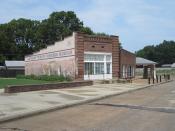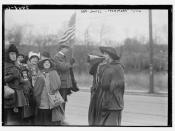Noticed in the early days of the twentieth century was the poor living standards of tenant farmers of the south. Over the years much research has been done to find what areas of life made up for this low standard. The focus of this compilation of research will be disease and poor housing.
Presently, most people looking for a house want a clean environment in a well built home. From descriptions, tenant farmers might have had an upgrade to be able to live in a downtown city apartment with rats and a leaky roof. According to a United States census, the housing in the seven southeastern states were the lowest in value. This put the southern farmer living in the worst homes in America(Jones 47). Many travelers passing through the southeast saw the tenant farmer's houses as mere huts on the verge of collapse. To add to the list of utility problems was the usual pools of water which surrounded the structure(Walker 17).
Water troubles did not just stop on the outside with the moat, but many homes also had leaky roofs to add to the repair list (Walker pg. 46). Travelers were also able to notice that in the 1930's that doors and windows of farmers homes were rarely screened(Jones 55). The shoddy houses that they lived in could not be helped, but it did not improve there defenses against disease.
Being so open to disease by the housing, it was no surprise that various illnesses struck the south with a vengeance. Housing was not the only way that farmers opened themselves up to disease, sharecroppers were often deprived of adequate food and clothing(Walker 92). The insufficient food among families of farmers was a side-effect of the sharecropping system(Walker 6). Of the food eaten not very much of it...


